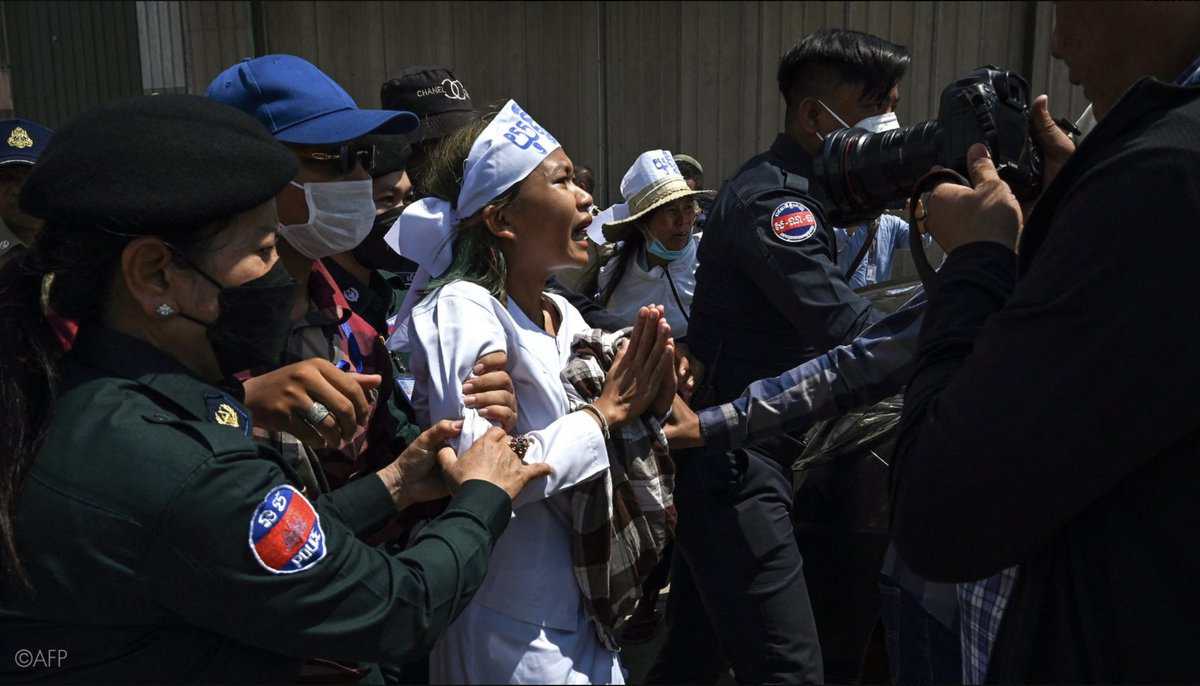Report on Financial Inclusion and its Role in Advancing the Sustainable Development Goals
Introduction: Financial Inclusion as a Catalyst for Sustainable Development
Financial inclusion is a critical component of a safe, fair, and stable financial system. It is integral to achieving key Sustainable Development Goals (SDGs), particularly SDG 8 (Decent Work and Economic Growth) and SDG 10 (Reduced Inequalities). By providing underserved families and entrepreneurs with access to affordable financial services, financial inclusion initiatives help build more secure lives, stronger communities, and a more resilient economy. The Federal Reserve’s mission to promote a healthy economy aligns with these global goals, recognizing that household financial stability is crucial for national economic growth and the stability of the financial system.
Foundational Barriers to Financial Access and SDG 10 (Reduced Inequalities)
Access to a basic bank account is the foundation of financial inclusion, serving as a gateway to broader financial services. However, significant disparities persist, hindering progress toward SDG 10 (Reduced Inequalities). According to the Federal Deposit Insurance Corporation’s 2023 National Survey, specific demographic groups face disproportionately low access to banking.
- Households that include a working-age person with a disability are three times as likely to be unbanked as those without.
- Hispanic households are five times as likely to be unbanked as White households.
- African American, American Indian, and Alaskan Native households are six times as likely to be unbanked as White households.
The primary reasons cited by unbanked individuals for not obtaining accounts include:
- High costs for account opening.
- Unpredictable or high fees.
- High minimum balance requirements.
Public-Private Partnerships (SDG 17) Driving Inclusive Banking
Addressing these barriers requires collaborative efforts, exemplifying SDG 17 (Partnerships for the Goals). The Bank On program, supported by the Cities for Financial Empowerment Fund (CFEF), is a leading example of a successful public-private partnership. This initiative unites regional financial institutions, community organizations, and local governments to integrate households into the formal financial system. CFEF certifies accounts that meet specific standards for affordability and accessibility.
Key features of certified Bank On accounts include:
- Low minimum deposits for account opening.
- Low or no maintenance, overdraft, or unexpected fees.
- Free access to branch ATM, online, and mobile banking services.
The Federal Reserve System has been a long-term partner in this initiative, supporting the development of coalitions and data collection hubs like the Bank On National Data Hub (BOND) to expand the availability of safe and affordable bank accounts.
Leveraging Innovation for Economic Resilience (SDG 8 & 9)
Technological innovation is a powerful tool for enhancing financial inclusion, directly supporting SDG 9 (Industry, Innovation, and Infrastructure). The development of real-time payment systems provides significant benefits for households and businesses, contributing to economic resilience and growth as outlined in SDG 8.
Benefits of faster payment services include:
- Enabling just-in-time transactions, such as same-day bill payments.
- Facilitating rapid fund transfers to cover emergency expenses.
- Providing greater control over payment flows, helping to avoid overdraft fees.
The Federal Reserve’s launch of the FedNow Service in 2023 provides an interbank payment infrastructure for instant and secure money transfers. Early applications, such as providing gig-economy workers with instant access to earned wages, demonstrate the potential of this technology to improve household cash flow management and support liquidity-constrained individuals.
Responsible Small-Dollar Lending for Poverty Alleviation (SDG 1)
Access to responsible and affordable small-dollar credit is essential for helping consumers manage income and expense volatility, a critical factor in achieving SDG 1 (No Poverty). Data from the Federal Reserve’s 2024 Survey of Household Economics and Decisionmaking indicates a widespread need for such credit, with nearly 20% of adults unable to cover an unexpected $400 expense without resorting to high-cost credit or selling assets. This figure rises to 46% for households with incomes under $25,000.
In 2020, federal bank regulators issued guidance promoting responsible small-dollar loan programs based on the following principles:
- Products should be structured to ensure most customers can successfully repay their loans according to the original terms.
- Repayment terms, pricing, and safeguards must minimize adverse outcomes, such as cycles of debt from rollovers or reborrowing.
- The program structure and repayment outcomes should enhance a borrower’s financial capabilities and contribute positively to their credit history.
Utilizing Alternative Data to Bridge the Credit Gap (SDG 10)
The use of alternative financial data is an emerging channel for improving financial inclusion and reducing the credit access gap, thereby advancing SDG 10 (Reduced Inequalities). By supplementing traditional credit scoring models, lenders can better assess the creditworthiness of borrowers with limited or no formal borrowing history.
Key advantages of using alternative data include:
- Evaluating cash flow metrics, such as steady income and consistent bill payments, as indicators of repayment likelihood.
- Providing a “second look” for consumers who would otherwise be denied credit.
- Enabling faster loan decisions through automated processes, which is critical for low- and moderate-income borrowers facing unexpected expenses.
Technologies such as application programming interfaces (APIs) further facilitate this process by allowing lenders to securely access permissioned consumer financial data for underwriting.
Analysis of Sustainable Development Goals in the Article
1. Which SDGs are addressed or connected to the issues highlighted in the article?
-
SDG 1: No Poverty
The article directly addresses issues related to poverty by focusing on financial inclusion for low-income customers and households. It discusses how access to affordable financial services, such as bank accounts and small-dollar loans, can help “underserved families… build more secure lives” and manage financial shocks, which is a key aspect of poverty alleviation.
-
SDG 8: Decent Work and Economic Growth
The article connects financial inclusion to broader economic health. It states that “access to credit for low-and-moderate income households and small businesses helps the economy to grow.” Furthermore, it highlights support for “minority entrepreneurship” and small businesses, which are crucial for job creation and sustainable economic growth.
-
SDG 9: Industry, Innovation, and Infrastructure
The article emphasizes the role of technological innovation and financial infrastructure in advancing financial inclusion. It details the development of “faster payments services” like the FedNow service in the U.S. and the Unified Payments Interface (UPI) in India. These represent advancements in financial infrastructure designed to be more efficient and accessible.
-
SDG 10: Reduced Inequalities
This is a central theme of the article. It explicitly points out the disparities in financial access among different demographic groups. The text notes that “groups that struggle with low account access, including those who are disabled, those without a high school diploma, and minority groups” are disproportionately unbanked. By promoting initiatives like Bank On and responsible lending, the efforts described aim to reduce these financial inequalities.
2. What specific targets under those SDGs can be identified based on the article’s content?
-
Under SDG 1 (No Poverty):
- Target 1.4: “By 2030, ensure that all men and women, in particular the poor and the vulnerable, have equal rights to economic resources, as well as access to basic services… and financial services, including microfinance.” The article’s entire focus on providing “access to basic bank account services,” “responsible small-dollar lending,” and other financial tools for “low-income customers” and “underserved families” directly aligns with this target.
-
Under SDG 8 (Decent Work and Economic Growth):
- Target 8.3: “Promote development-oriented policies that support productive activities… entrepreneurship… and encourage the formalization and growth of micro-, small- and medium-sized enterprises, including through access to financial services.” The article supports this target by discussing how financial inclusion aids “minority entrepreneurship” and provides “access to credit for… small businesses.”
- Target 8.10: “Strengthen the capacity of domestic financial institutions to encourage and expand access to banking, insurance and financial services for all.” The article details efforts by the Federal Reserve, private sector banks, and coalitions like Bank On to expand access to “safe and affordable bank accounts” and other financial services for everyone, especially those currently excluded.
-
Under SDG 9 (Industry, Innovation, and Infrastructure):
- Target 9.1: “Develop quality, reliable, sustainable and resilient infrastructure… with a focus on affordable and equitable access for all.” The discussion of the FedNow service as an “interbank payment system for banks and credit unions of all sizes to instantly and securely transfer money” is an example of developing a new, reliable financial infrastructure to improve access for all.
- Target 9.c: “Significantly increase access to information and communications technology…” While not the main focus, the article’s mention of “online, and mobile banking,” “application programming interfaces (APIs),” and digital payment systems like UPI in India implies the importance of leveraging technology to deliver financial services, which relates to this target.
-
Under SDG 10 (Reduced Inequalities):
- Target 10.2: “By 2030, empower and promote the social, economic and political inclusion of all, irrespective of age, sex, disability, race, ethnicity…” The article directly addresses this by highlighting the financial exclusion of specific groups and promoting solutions. It cites data showing that households with a disabled person, as well as “Hispanic and African American households and American Indian and Alaskan Native households,” are far more likely to be unbanked, and the initiatives discussed aim to correct this disparity.
3. Are there any indicators mentioned or implied in the article that can be used to measure progress towards the identified targets?
- Proportion of the population with a bank account: The article explicitly uses this as a measure of progress, stating that “the number of Americans without bank accounts is at the lowest it has been since the survey began in 2009.” It also provides disaggregated data, noting that “Hispanic and African American households… are five and six times as likely, respectively, to be unbanked as White households,” which can be used to track progress in reducing inequality.
- Financial fragility of households: The article references the Fed’s 2024 Survey of Household Economics and Decisionmaking, which asks how people would cover an unexpected $400 expense. The statistic that “nearly 20 percent of adults” would struggle to pay it is a direct indicator of financial vulnerability, which financial inclusion aims to reduce.
- Availability of affordable financial products: The article mentions the Bank On program and notes that “Over 46,000 bank branches nationwide offer a certified Bank On account.” This number serves as an indicator of the supply of accessible and affordable banking options.
- Adoption of new financial infrastructure: The article discusses the launch of the FedNow service and the implementation of UPI in India. The growth in the use of these instant payment platforms by consumers and businesses is an implied indicator of progress in modernizing financial infrastructure.
- Success of responsible lending programs: For small-dollar loans, the article suggests an indicator of a well-designed program is that “most customers successfully repay their small-dollar loans in accordance with original loan terms.” This repayment rate is a key metric for measuring the effectiveness and affordability of credit products for vulnerable populations.
4. Summary Table of SDGs, Targets, and Indicators
| SDGs | Targets | Indicators |
|---|---|---|
| SDG 1: No Poverty | 1.4: Ensure equal rights to economic resources and access to financial services for the poor and vulnerable. |
|
| SDG 8: Decent Work and Economic Growth | 8.3: Promote policies that support entrepreneurship and the growth of small- and medium-sized enterprises through access to financial services.
8.10: Expand access to banking and financial services for all. |
|
| SDG 9: Industry, Innovation, and Infrastructure | 9.1: Develop quality, reliable, and resilient infrastructure with a focus on affordable and equitable access.
9.c: Increase access to information and communications technology. |
|
| SDG 10: Reduced Inequalities | 10.2: Empower and promote the social and economic inclusion of all, irrespective of disability, race, ethnicity, etc. |
|
Source: federalreserve.gov







